Your skin and nails can provide early warning signs of heart disease, but these signs can look different depending on your skin tone. In this comprehensive guide, we’ll break down 12 key skin and nail changes that may signal an underlying heart health issue, and explain how they can manifest on white and black skin.
Recognizing these potential warning signs is crucial, as early detection is key to preventing heart disease from progressing. However, it’s important to remember that not all of these signs necessarily indicate a serious heart problem. If you notice any of these changes, consult your healthcare provider for proper evaluation and diagnosis.
1. Edema (Swelling in the Feet and Legs)
One of the most common skin signs of heart disease is edema, or swelling in the feet and lower legs. This puffiness is caused by a buildup of fluid, often due to poor circulation or the heart’s inability to effectively pump blood.
Edema can appear the same on white and black skin, typically manifesting as visible swelling or puffiness in the feet and lower legs. You may notice your shoes feeling tighter or see deep indentations left by your socks. In severe cases, the swelling can even extend up the legs and affect the lower back or genitals.
It’s important to pay close attention to edema, especially if it’s accompanied by other symptoms like fatigue or shortness of breath. Seek medical attention if you notice persistent or worsening swelling, as it could be a sign of an underlying heart condition. Early treatment is crucial to prevent the condition from progressing.

2. Cyanosis (Blue or Purple Skin)
Another potential skin sign of heart disease is cyanosis, which refers to a bluish or purplish discoloration of the skin and mucous membranes. This occurs when the blood is not getting enough oxygen, often due to poor circulation or blocked blood vessels.
On white skin, cyanosis typically appears as a distinct bluish tint. However, on black skin, the discoloration may look more grayish or ashy, particularly around the lips, gums, and nails. This is an important distinction, as the color change can be more subtle on darker skin tones.
Cyanosis is a serious symptom that requires immediate medical attention, as it indicates the heart is not effectively delivering oxygenated blood to the body’s tissues. If you notice any blue or purple tinting of the skin, especially around the lips or extremities, don’t hesitate to seek professional care.
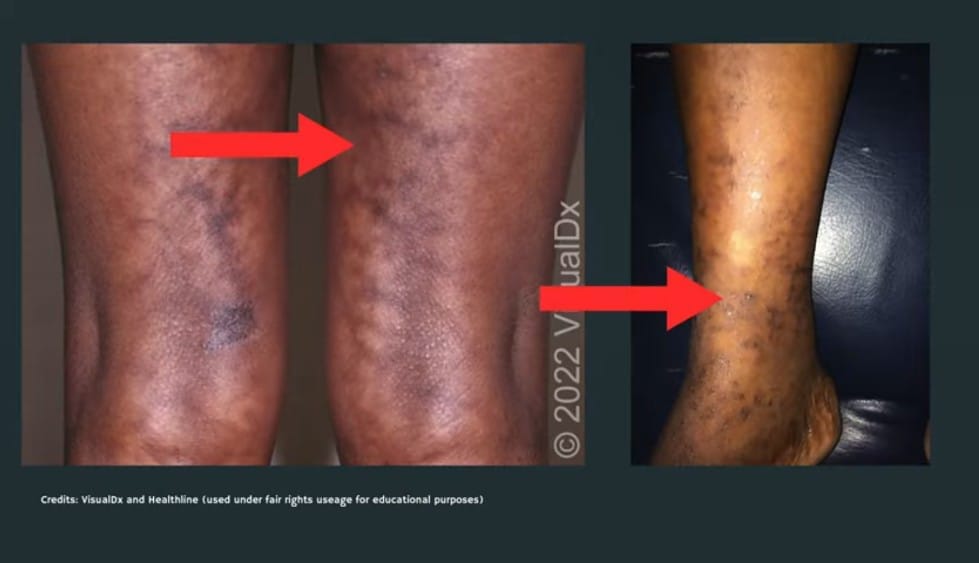
3. Livedo Reticularis (Net-Like Skin Pattern)
Livedo reticularis is a skin condition characterized by a blue or purple net-like pattern on the skin. This is caused by poor circulation, which can be a sign of an underlying heart or vascular issue.
On white skin, livedo reticularis typically appears as a bluish or purplish web-like pattern. On black skin, the discoloration may manifest as a darker brown or purple patch with a similar net-like appearance.
In some cases, livedo reticularis can be a harmless condition that comes and goes with temperature changes. However, if the pattern persists or is accompanied by other symptoms, it’s important to have it evaluated by a healthcare provider. Persistent livedo reticularis may indicate blocked arteries or other circulatory problems that require further investigation and treatment.
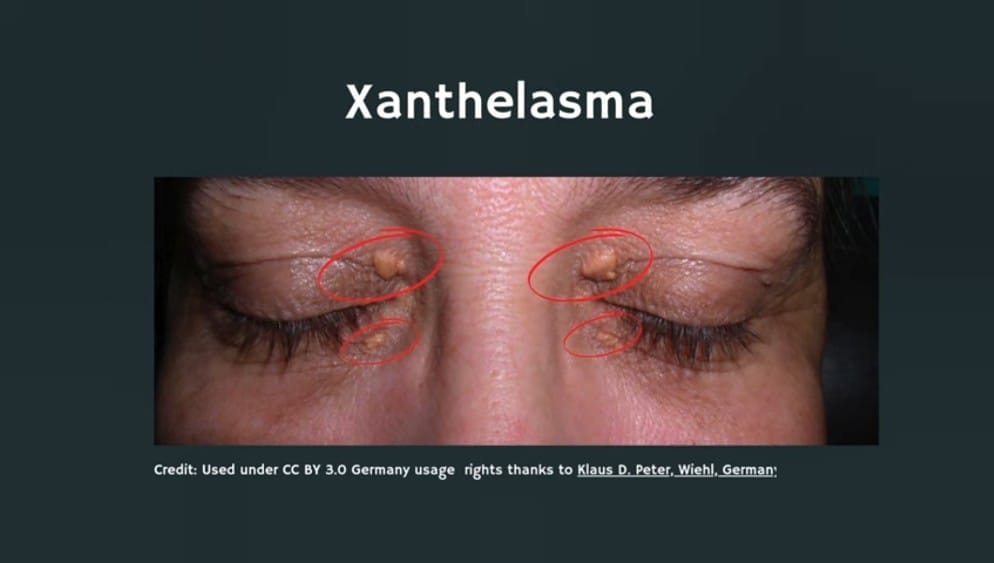
4. Xanthelasma and Xanthomas (Cholesterol Deposits)
Xanthelasma and xanthomas are both types of cholesterol deposits that can appear on the skin, and they may be an early indicator of heart disease.
Xanthelasma refers to yellowish, flat, and soft growths that typically appear around the eyes, particularly on or near the eyelids. On white skin, these deposits may appear as distinct yellowish patches, while on black skin, they may look more grayish or ashy.
Xanthomas, on the other hand, are a broader term that encompasses cholesterol deposits that can occur anywhere on the body, not just around the eyes. These waxy, yellowish-orange growths can range in size from small bumps to larger raised nodules, and they may be found on the elbows, knees, hands, feet, or even more unusual locations.
The presence of xanthelasma or xanthomas can signal high cholesterol or other lipid disorders, which are major risk factors for heart disease. If you notice these growths, it’s important to have them evaluated by a healthcare provider, even if your cholesterol levels appear normal. Early treatment of the underlying condition can help prevent or manage heart disease.
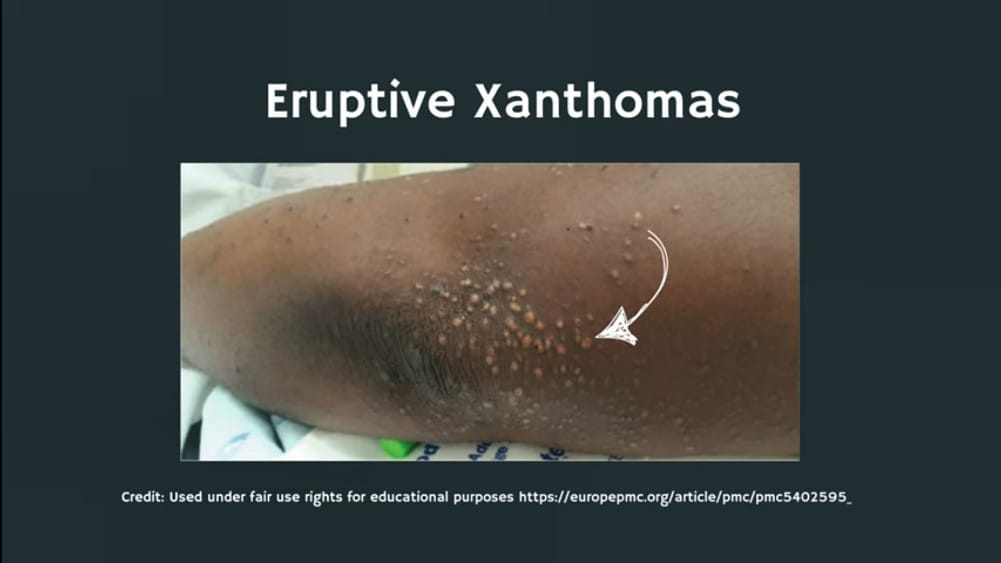
5. Eruptive Xanthomas (Sudden Waxy Bumps)
Eruptive xanthomas are another type of cholesterol-related skin condition that can be a sign of heart disease. These sudden, waxy bumps can appear as pimple-like lesions or a rash-like eruption on the skin.
On white skin, eruptive xanthomas often appear as yellowish bumps, while on black skin, they may look more reddish-brown. These growths are caused by extremely high levels of cholesterol or triglycerides in the blood, which can significantly increase the risk of heart disease.
If you notice the sudden appearance of these waxy bumps, especially accompanied by other symptoms like chest pain, shortness of breath, or extreme fatigue, it’s crucial to seek medical attention right away. Prompt treatment of the underlying cholesterol issue is essential to prevent further complications.
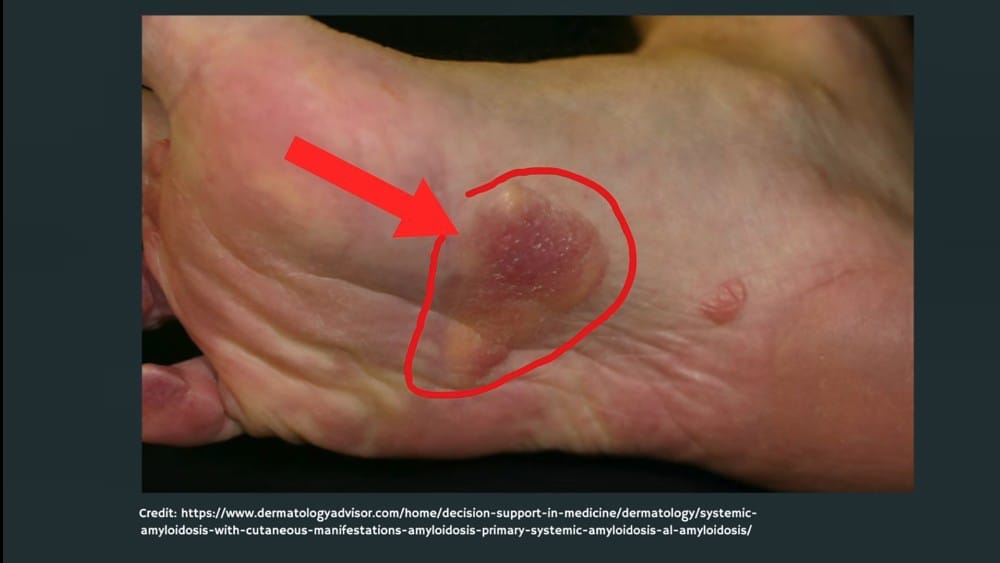
6. Clubbing of the Fingernails
Clubbing of the fingernails, also known as digital clubbing, is a condition where the nails curve downward, and the fingertips become swollen and rounded, resembling the shape of a drumstick.
While there are various potential causes of clubbing, including lung diseases and certain genetic conditions, it can also be a sign of an underlying heart problem. The swelling and curvature of the nails are caused by an increase in tissue growth, often due to poor oxygen circulation.
Clubbing can appear the same on both white and black skin, with the nails taking on a distinctive downward curve and the fingertips becoming noticeably enlarged. If you notice these changes in your nails, it’s important to have them evaluated by a healthcare provider to determine the underlying cause and rule out any heart-related issues.
7. Splinter Hemorrhages (Red or Purple Lines Under the Nails)
Splinter hemorrhages are small, red, or purple lines that appear under the nails, resembling tiny splinters of blood. While they can have various causes, including injuries, they can also be a sign of heart disease or other underlying health conditions.
On white skin, these hemorrhages may appear as distinct red or purple streaks, while on black skin, they may look more brown or black. If you notice these lines and can’t recall any recent nail trauma, it’s a good idea to have them checked out by a healthcare provider.
Splinter hemorrhages can indicate a range of issues, from infective endocarditis (a heart infection) to other circulatory problems. Seeking prompt medical attention is crucial to determine the underlying cause and receive appropriate treatment.
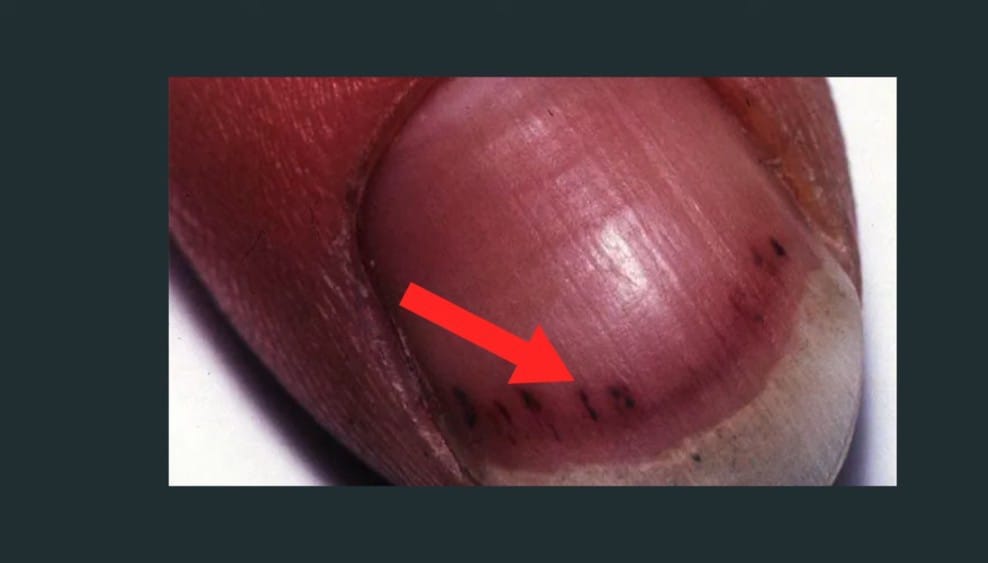
8. Nodules of Systemic Amyloidosis (Smooth, Waxy Lumps)
Systemic amyloidosis is a condition where abnormal proteins, called amyloids, accumulate in the organs and tissues, including the heart. One of the skin manifestations of this condition is the appearance of smooth, waxy nodules or lumps.
On white skin, these nodules may appear pale or slightly yellowish, while on black skin, they may look lighter than the surrounding skin or present as shiny, raised patches. These lumps can develop anywhere on the body and are a sign that the amyloid buildup is affecting the heart and other vital organs.
If you notice any unusual, painless lumps on your skin, it’s important to have them evaluated by a healthcare provider, as they may be an indication of systemic amyloidosis and an underlying heart condition that requires prompt treatment.
9. Osler Nodes (Painful Lumps in the Fingers and Toes)
Osler nodes are small, painful lumps that can develop in the fingers or toes, and they are often associated with infective endocarditis, a serious heart infection.
On white skin, these nodes may appear as red or purple bumps, while on black skin, they may manifest as dark purple or reddish-brown lesions. The lumps are typically tender to the touch and can be a sign of a heart valve infection that requires immediate medical attention and treatment with antibiotics.
If you experience any unexplained, painful lumps in your fingers or toes, it’s crucial to seek medical care right away to rule out infective endocarditis or other underlying heart-related issues.
10. Janeway Lesions (Brown or Red Spots on the Palms and Soles)
Janeway lesions are another skin manifestation associated with infective endocarditis. These painless, reddish-brown, or brown spots appear on the palms of the hands and the soles of the feet.
On white skin, Janeway lesions may appear as distinct reddish-brown spots, while on black skin, they may look more like darker brown or purplish patches. These lesions are a sign of a heart infection and require prompt medical treatment to prevent further complications.
If you notice any unexplained spots or discoloration on the palms of your hands or the soles of your feet, it’s important to have them evaluated by a healthcare provider, as they could be an indication of a serious heart condition.
11. Erythema marginatum (Non-Itchy Rash with Raised Edges)
Erythema marginatum is a skin rash characterized by slightly raised, flat spots with defined edges. This rash is associated with rheumatic fever, a condition that can lead to long-term heart damage if left untreated.
On white skin, the rash typically appears as a red or pink discoloration, while on black skin, it may manifest as darker patches or have a more subtle raised border. The rash is usually non-itchy and can develop after a streptococcal throat infection.
If you or your child develops a rash with these characteristics, especially following a bout of strep throat, it’s crucial to seek medical attention immediately. Prompt treatment of rheumatic fever is essential to prevent the development of serious heart complications.
12. Kawasaki Disease (Rash and Cracked, Bleeding Lips)
Kawasaki disease is a rare condition that primarily affects young children and can have serious implications for heart health. One of the key skin manifestations is a bright red rash, often accompanied by cracked, bleeding lips.
On white skin, the rash may appear as a vivid, red discoloration, while on black skin, it may look more purplish or darker in tone. The cracked, bleeding lips are another distinctive feature of this condition.
Kawasaki disease is a medical emergency, as it can lead to inflammation of the blood vessels, including the coronary arteries that supply the heart. If your child develops these symptoms, seek immediate medical care to ensure prompt diagnosis and treatment, which is crucial to prevent long-term heart damage.
Conclusion
Your skin and nails can provide valuable clues about your heart health, but it’s important to be aware that these signs can manifest differently on various skin tones. By understanding the potential warning signs and how they may appear, you can be better equipped to recognize them and seek timely medical attention.
Remember, while these skin and nail changes can be indicative of heart disease, not all of them necessarily indicate a serious underlying condition. It’s always best to consult with a healthcare provider for proper evaluation and diagnosis. Early detection and treatment are key to preventing the progression of heart disease and maintaining overall cardiovascular health.
For more information and resources on heart disease and skin health, be sure to check out the links provided. Stay vigilant, and don’t hesitate to seek medical advice if you notice any concerning changes in your skin or nails.








